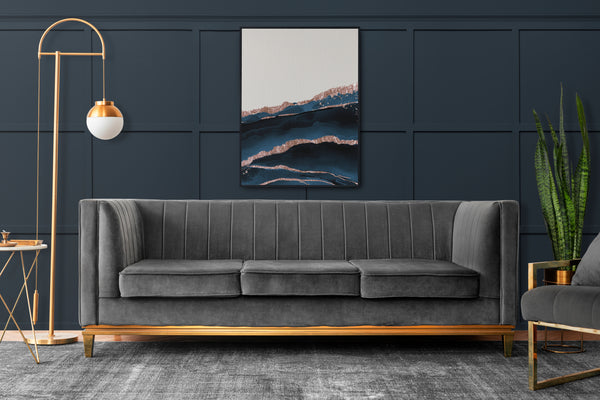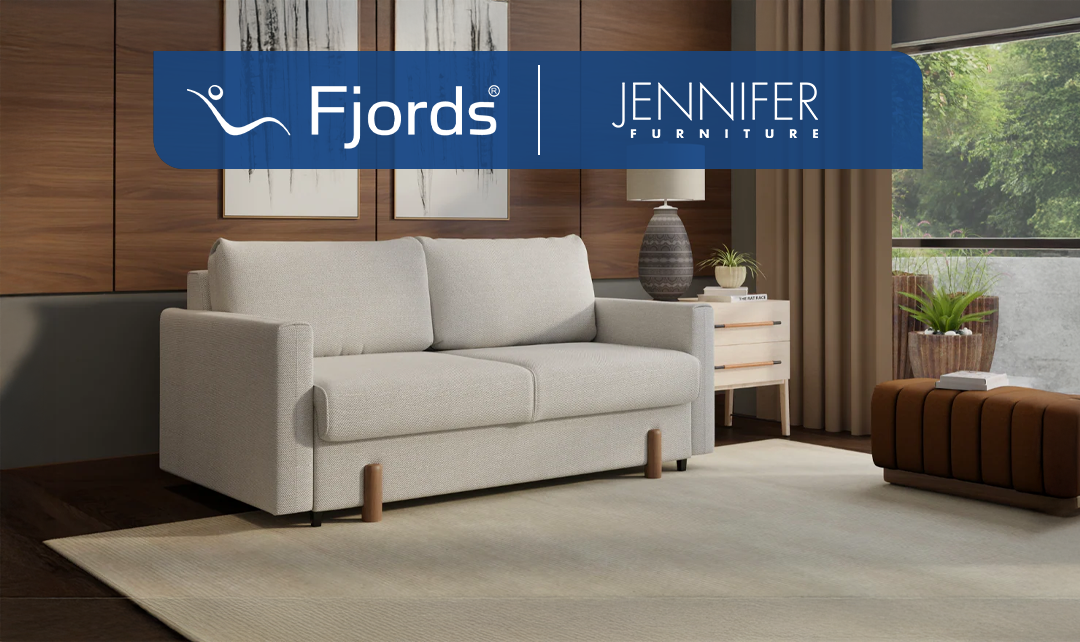How to Choose the Perfect Bedroom Set for Your Style

TABLE OF CONTENTS
- What is a Bedroom Set?
- What is Your Preferred Bedroom Style?
- How to Figure Out Your Bedroom Style
- Common Style Personalities
- Mixing Styles is Okay
- Style Isn’t About Trends
- Tips to Choose the Right Bedroom Set Apart from Style
- Where to Shop
- Wrap-Up
A bedroom is one of the most personal spaces in a home. It’s where your day begins and where it quietly winds down. Choosing the right bedroom set is about matching furniture pieces and finding a setup that reflects who you are, feels comfortable, and fits the space you live in.
This guide explains what you need to look for when choosing a bedroom set. It focuses on your style, space, and lifestyle without unnecessary jargon or overly complicated ideas.
What is a Bedroom Set?

A bedroom set usually includes multiple pieces of furniture designed to complement each other in style, finish, and function. Most commonly, a bedroom set includes:
- Bed Frame
- Nightstands
- Dresser
- Mirror
- Chest of Drawers (optional)
- Wardrobe (optional)
Depending on your needs, you can choose a simple 2-piece set or a more elaborate 5- or 6-piece collection.
What is Your Preferred Bedroom Style?
Your style is more than a label like “modern” or “classic.” It’s a combination of your habits, preferences, emotional responses to certain colors, materials, and the kind of atmosphere you naturally feel good in.
Some people like clean, empty surfaces with sharp lines. Others feel more at home surrounded by warm wood tones, textured fabrics, and vintage pieces with history. The right bedroom set should match not just how your room looks but how you live.

How to Figure Out Your Bedroom Style
If you’ve never really thought about it, here’s a simple way to narrow it down:
1. Pay attention to your reactions.
Look through room photos online or in magazines. Save the ones you immediately like. Don’t overthink why; just follow your first instinct.
2. Look around your current space.
Which items make you feel good? Is it the sleek metal lamp on your desk or the old wooden chair you inherited? Notice the textures, colors, and finishes you’re drawn to.
3. Think about your lifestyle.
Your routine affects your furniture needs.
- If you’re someone who reads before sleeping, you’ll need a cozy upholstered headboard and a sturdy nightstand for your books.
- If you prefer a clutter-free zone, low-profile beds and floating nightstands might suit you better.
- If you love getting ready in your bedroom, a dresser with an attached mirror and good lighting will feel essential.
4. Identify Your Style Preferences
Everyone has a design instinct, even if it isn’t formal. Some prefer clean, modern lines, while others are drawn to rich wood finishes and vintage carvings.
To identify your style, ask yourself:
- Do you like simple and sleek furniture or bold, decorative pieces?
- Are you drawn to warm, earthy tones or cool, neutral shades?
- Do you prefer symmetry or a more casual, mixed look?
- Is practicality more important than appearance, or is it the other way around?
Once you answer these, it becomes easier to pick a set that won’t feel out of place.
Common Style Personalities
Let’s go beyond surface-level labels and describe how each style typically feels and functions in a bedroom:
|
Style |
Characteristics |
How It Feels |
Works Best For |
|
Modern |
Simple shapes, no excess detail, neutral colors |
Clean, airy, easy to maintain |
Apartments, people who like minimalism |
|
Traditional |
Rich wood, carved details, matching sets |
Warm, formal, timeless |
Larger homes, those who love classic charm |
|
Rustic |
Raw wood, visible grain, natural fabrics |
Cozy, earthy, informal |
Nature-lovers, countryside spaces |
|
Industrial |
Metal accents, unfinished wood, bold shapes |
Edgy, functional, urban |
Loft apartments, creative professionals |
|
Mid-Century Modern |
Tapered legs, organic shapes, bold accent colors |
Retro, cheerful, uncluttered |
Compact homes, luxury fans |
|
Glam |
High-gloss finishes, velvet, tufted headboards |
Elegant, luxurious, dramatic |
Master bedrooms, people who love statement pieces |
|
Scandinavian |
Pale wood, light fabrics, soft minimalism |
Calm, clean, welcoming |
Small spaces, those who love simplicity with warmth |
Mixing Styles is Okay

You don’t have to pick one label and stick to it. Most people’s taste is a mix. A sleek bed with a rustic wooden bench at the foot or a modern dresser paired with vintage lamps works beautifully when balanced well.
The goal:
- Balance one dominant style with subtle touches of others.
- Keep a consistent color scheme or texture family to tie different pieces together.
Let's learn from an example:
If you like Modern but find it too cold, choose a minimal bed frame and dresser, then soften the look with warm-toned bedding, a textured rug, or a vintage nightstand.
If your heart leans toward Traditional but you want it to feel current, pick classic shapes but in lighter wood or neutral colors, and avoid overly ornate details.
Style Isn’t About Trends
Most importantly, your style should feel personal, not trendy. What’s popular today might not suit your space or mood next year. Choose bedroom furniture that makes you feel relaxed and at ease.
When you wake up in the morning or unwind before bed, your room should look and feel like you, not a furniture showroom.
Tips to Choose the Right Bedroom Set Apart from Style
A bedroom is a place to sleep and also a reflection of your style, habits, and comfort preferences. The right bedroom set can:
- Improve room functionality
- Enhance mood through design and color
- Keep belongings organized
- Create a balanced and peaceful atmosphere
Bad choices lead to clutter, discomfort, and a disjointed space. That’s why every decision, from material to layout, needs attention.

1. Understand Your Bedroom’s Size and Layout
Before you browse through catalogs or websites, look at your bedroom as it is.
Measure everything. This might sound obvious, but skipping this step is one of the biggest mistakes people make.
Key things to measure:
|
Element |
Why It Matters |
|
Length and width of the room |
To understand how much space you can allocate for furniture |
|
Doorway size |
To ensure large pieces can fit through |
|
Window placement |
To avoid blocking natural light or views |
|
Distance between furniture and walls |
To maintain easy movement and avoid cramped spaces |
Keep at least 24 inches of clear space around your bed for easy movement.
2. Choose the Right Material
What your bedroom set’s made from matters more than you might think. It affects everything from how heavy it feels to how easy it is to keep clean, and the kind of presence it adds to your room.
Common Bedroom Set Materials:
-
Solid Wood: Classic, strong, and built to last. Think oak, walnut, mahogany, or teak. It’ll need the occasional polish but stays beautiful for years.
-
Engineered Wood (MDF, Plywood): Budget-friendly, lightweight, and great for modern setups. Just handle with a bit more care to avoid chips and scratches.
-
Metal: Sturdy and low-maintenance with a cool, modern vibe. Perfect for industrial or minimalist looks, though it can feel a little cold, depending on your taste.
-
Upholstered Pieces: Soft, cozy, and perfect for adding texture. Available in everything from linen to leather. Keep in mind, regular cleaning helps keep them fresh.
3. Start with the Bed
The bed is the anchor for your entire bedroom. Everything else either complements its look or fits around its size.
When choosing, focus on:
-
Size: Pick what fits your room and your sleeping habits ((King, Cal King, Queen, full, Twin… you get it).
-
Headboard Style: Whether you’re into tufted fabric, sleek wood, metal frames, the one with LED lights, or simple panels, it sets the room’s tone.
-
Frame Height: Low frames give a clean, modern look, while higher ones feel a little grander.
-
Storage Options: If tight on space, look for beds with built-in drawers or a headboard with storage cubbies.
4. Function vs. Appearance

Sure, a bedroom set can look gorgeous in a photo, but if it doesn’t fit how you live day-to-day, it’ll turn into a hassle.
Think about:
- How much actual storage you’ll use
- Whether a dresser mirror or wall-mounted one works better
- If you’re fine with one nightstand or need a pair
- Whether you like your stuff hidden in drawers or displayed on open shelves
- If a bench at the foot of the bed is a comfy touch or just takes up space
It helps to jot down what you need before you start browsing.
5. Stick with a Color Scheme You’ll Love Long-Term

Let’s be genuine; nobody’s redoing their bedroom every year. That’s why your furniture should still look good to you five or ten years from now.
Here’s what to factor in:
-
Room Size: Light colors make small rooms feel bigger, while dark wood gives large spaces a rich, cozy vibe.
-
Natural Light: Bright rooms can handle cooler, muted shades. Dim rooms feel warmer with deep, rich hues.
- Wall and Floor Colors: Make sure your furniture tones don’t clash with what’s already in the room.
-
Safe Picks: Neutral woods like oak, ash, or walnut play nicely with just about everything. Want a pop of color? Make one bold choice, like a velvet headboard, and keep the rest subtle.
6. Plan the Furniture Layout
Before you click “buy,” sketch out your room with measurements and furniture sizes.
Why? Because even the most beautiful king bed isn’t worth it if you can’t squeeze in nightstands or open your closet.
Quick layout reminders:
- Put the bed along the longest wall
- Avoid blocking windows
- Leave room for doors to swing open
- Keep about 24–30 inches of walking space around key pieces
- Position dressers so mirrors catch natural light
7. Don’t Forget the Small Details
People often pick a bedroom set and skip the little things that tie the room together. It’s these finishing touches that make a space feel polished.
Check for:
- Drawer handles that match your room’s style
- A headboard height that’s comfy for reading in bed
- Nightstands big enough for your essentials
- A dresser mirror that’s hung at a usable height
- Storage that actually suits your belongings
8. Budget Wisely: Quality Over Quantity
When it comes to bedroom furniture, it’s smarter to invest in a solid, well-made 3-piece set than grab a low-quality 5-piece just to fill the room.
Budget Breakdown:
- Bed Frame: 50%
- Nightstands: 20%
- Dresser: 20%
- Accessories: 10%
It makes sense since your bed takes the most wear, followed by dressers and nightstands.
Where to Shop
Not all stores are offering the same service. Some have better quality, selection, or customer service than others. Reliable online shops like Jenniferfurniture.com make it easy to find a solid mix of options.
Why shop here?
- Clear, detailed product info and measurements
- Collections curated by style and function
- Quality materials tested for durability
- Manufacturer warranties
- Easy browsing for bedroom sets, individual pieces, and storage solutions
- Helpful customer service and delivery options
Wrap-Up
Choosing the perfect bedroom set isn’t about chasing trends; it’s more about creating a space that reflects your style, suits your lifestyle, and makes you feel good every time you walk in.
So, measure your room before you do anything else. Know your style, pick reliable materials, prioritize function, stick to a timeless color palette, plan your layout carefully, and shop with brands you can trust.





